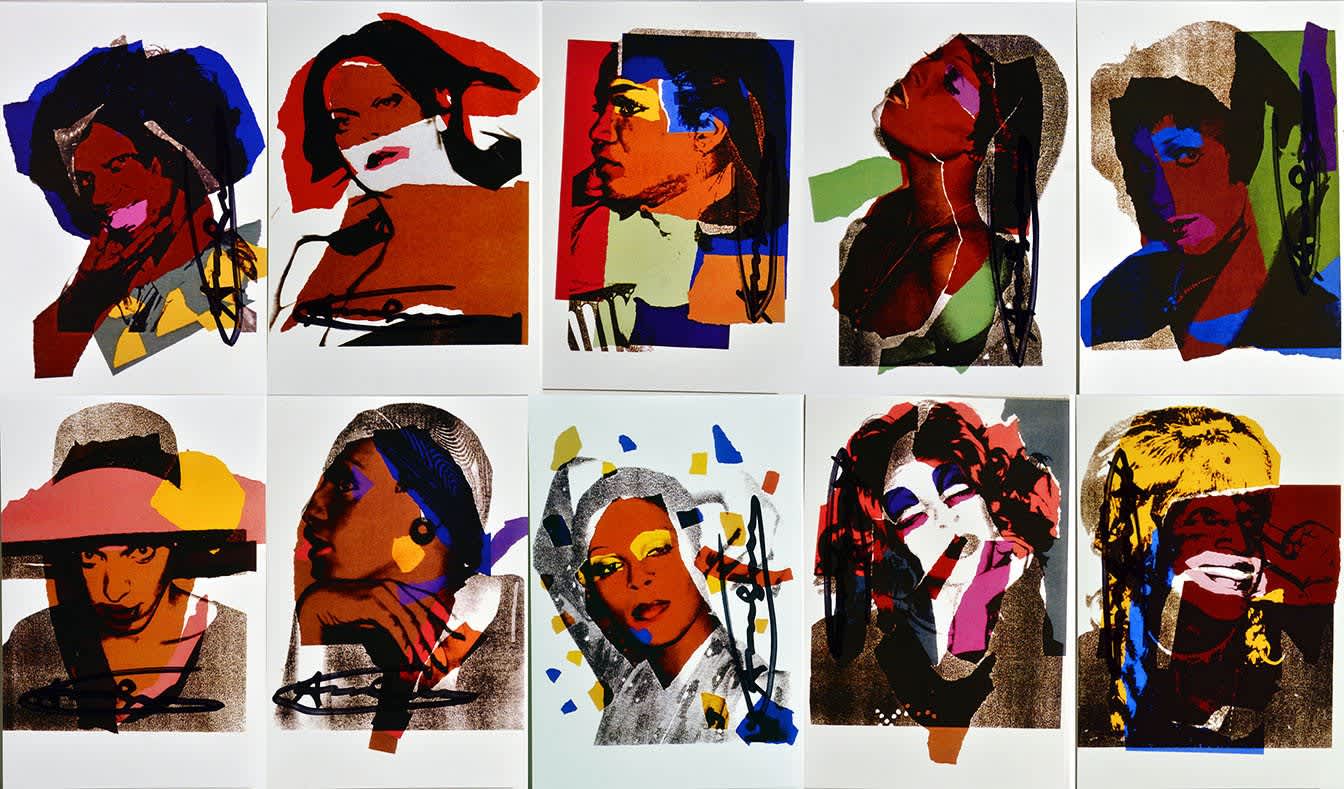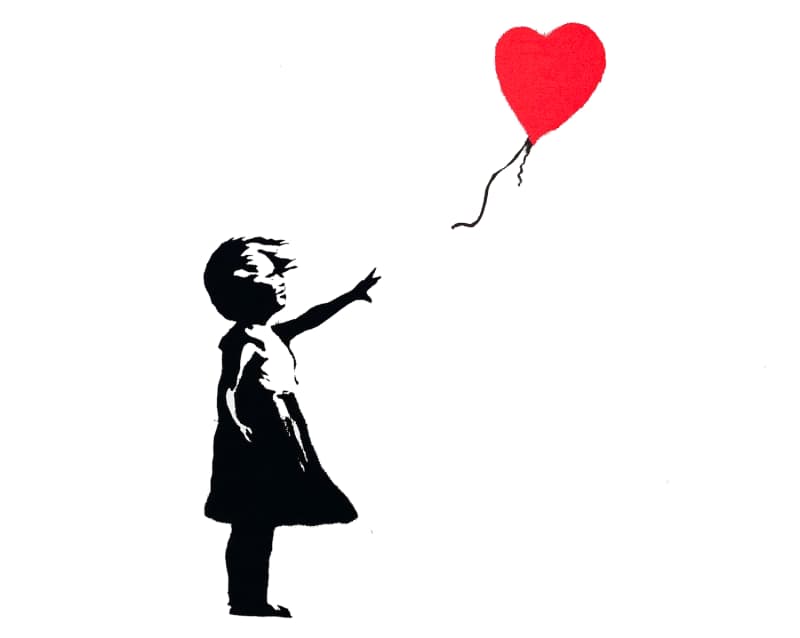From Hockney to Haring, we look at the artists championing queer art.
Pride, by nature, thrives on a challenge. From the first shot glass thrown by Marsha P. Johnson during the Stonewall Inn riots in 1969 to the ongoing resistance against violence towards trans women of colour, fighting for human rights have been inherent to queer liberation.
For centuries those standing strong at the forefront of this revolution have been artists, raising their voices in brushstrokes and gestures. Whether telling their stories through their artwork or defying limitations through their very existence and thriving success, artists have always been narrators of queer resilience and imagination. They continue to inspire generations to further their legacy and celebrate their power through their signature use of bold colour and form.
Despite London’s Pride parade being cancelled for a second year due to the pandemic, we reflect on the artists that have championed queer art, bringing neglected narratives and stories into the collective consciousness of society. From Haring’s campaign to raise awareness about the devastating effects of AIDS to Hockney’s quiet resistance painted in pastel colours, queer art is all around us and what better time to celebrate the artists that are expanding the horizons of our future, than now.
Keith Haring
While the ongoing COVID-19 pandemic has imposed unparalleled strains across the globe, the LGBTQ+ communities have been living with the reality of the AIDS epidemic for decades - and few artists have depicted the struggle with joy like Keith Haring. A true New York artist, Haring started out in the city’s thriving Downtown in the 1980s by drawing his now-signature host of characters on unused advertisement boards, including radiant babies, barking dogs and love hearts.
A celebrity-level fame found him soon after, catapulting him and his artwork into the limelight. Not only did he spread an unbridled sense of joy and love with his work, but he also illustrated heavy subjects like death, addiction, and racism with an anarchic jubilance. He tackled topics that others dare not mention and his widespread appreciation as an artist meant that taboo subjects, like the AIDS epidemic, were finally being talked about.
From a church in Italy to a hospital in France, and most famously the subway system of New York City, the universe was the canvas for Haring’s murals of iconic stick figures. Dancing, kissing, and fighting, Haring’s figures continue to radiate hope, even decades after his premature death due to complications from AIDS.

KEITH HARING, FERTILITY SUITE UNTITLED 4, 1983
Andy Warhol
Launching his career as an illustrator, window designer and fashion sketcher, Warhol concocted an incomparable visual lexicon of consumerism and media throughout his illustrious artistic career. From his Campbell’s soup cans to celebrity portraits, Warhol and his artwork was nothing short of iconic. His friendships and collaborations with numerous female stars resulted in some of the landmark icons of the queer culture and his veiled vulnerability when portraying the likes of Marilyn Monroe or Elizabeth Taylor taught us about our flaws and vanities. Yet, Warhol’s contribution to queer culture far extends beyond his legendary friendships and celebrity portraits.
During the 1950s, the artist sketched many sensual unknown portraits and nude depictions of men, illustrating a softer side to male eroticism. Furthermore, in 1974, Warhol was commissioned by Italian art dealer Luciano Anselmino to renounce the detritus of everyday life and instead depict New York’s hidden community of drag queens. The series, now known as Ladies and Gentleman, is made up of 268 vibrantly coloured screen prints featuring iconic members of the LGBTQ+ community, including Helen Morales, Wilhelmina Ross and even Marsha P. Johnson herself. In doing this, Warhol provided visibility to unseen members of society, and yet, even despite the artist’s own fame, it was not until 2014 that any researchers or art historians critically reviewed the works. Until then, all the sitters had remained unidentified, and their critical importance within both cultural and wider history had been radically undervalued.
Thankfully, due to the tireless efforts of campaigners and artists alike, times are changing and in 2020, Ladies and Gentleman went on view at the Tate Modern to great critical acclaim.
Ross Muir
Pop art’s legacy continues to inspire contemporary artists who are compelled to comment on today’s culture through the movement’s innate wit and global appeal. Glasgow-based artist Ross Muir filters this inspiration through a personal painting style that also pays homage to traditional European painting, and its masters, including Van Gogh and Matisse. Emerging from a self-taught background, Muir is among the artists who find survival in art-making. His famous quote, “Art has become my mother, father, and my closest companion,” best encapsulates Muir’s relationship to his canvas, which he found at age thirty. Figures in Muir’s paintings recall iconic posers in the canon, but he coats his juxtapositions with references to contemporary life, often readdressing historical imbalances with pertinence and flair.
This year in honour of London Pride, Muir is releasing a new print entitled Oh Jessica. A play on Lichtenstein’s Oh Jeff I Love You Too But (1964), the artist has reimagined the scene, with the central figure speaking to a girlfriend, rather than the previous romantic interest, Jeff. With rainbow hair reminiscent of the LGBTQ+ rainbow flag and with all profits from the print’s sale going to Stonewall, Oh Jessica is as witty as it is meaningful.
David Hockney
The wave of contemporary figurative painting is doubtlessly helmed by young queer artists. Ask many and they will cite David Hockney as their influence. One of the most celebrated living artists in the world, the eighty-four year old painter finds his power in refusing to slow down, proving that art is a weapon for survival. His light-filled palette and timeless approach to nature and figures have defied categorizations and styles, presenting a truly queer stance in its nature. If there is an artwork that single-handedly defies Western 20th century queer art, Hockney’s Portrait of an Artist (Pool with Two Figures) from 1972 indisputably takes the lead. Besides its art historical legacy, the painting is an art market landmark for fetching $90 million in 2018, the highest price ever paid for a painting by a living artist. The painting encapsulates desire and identity through a sleek and modern eye while mystery and introspection thinly veils Hockney’s sun-kissed California landscape. Hockney’s quiet resistance, through defying categorisation and subtle nods to identity, proves that queer art need not be explicit in its dissent to be effective.
DAVID HOCKNEY, GREY BLOOMS, 1986












